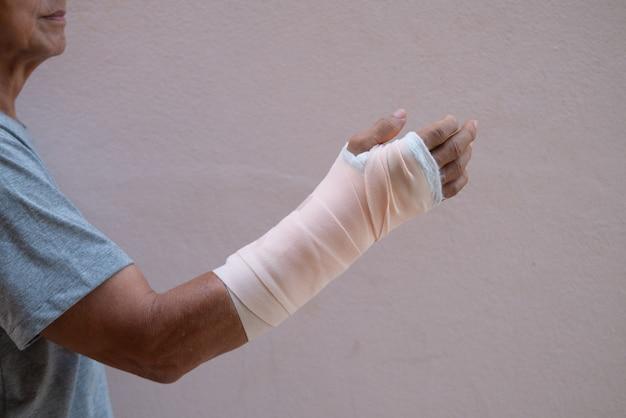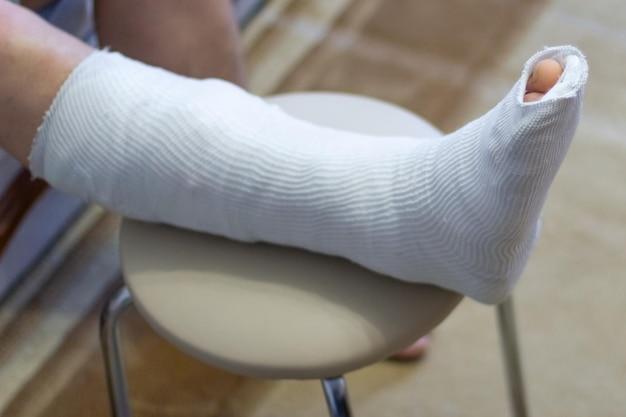In the world of orthopedic care, plaster casts have long been the go-to solution for treating broken bones and fractures. However, with advancements in medical technology, alternatives to traditional plaster casts are emerging. If you’ve ever experienced the pitfalls of wearing a cast—itchiness, discomfort, and limited mobility—then this blog post is for you. We’ll delve into the world of non-traditional casting methods and explore whether there are viable alternatives to the conventional plaster cast.
From exploring the reasons why plaster casts are used and the types of injuries that require them, to examining the possibility of bone healing without the use of cast materials, we’ll cover a wide range of questions and concerns related to cast alternatives. So, whether you’re curious about the differences between a brace and a cast, or if you’re wondering if you can finally bid farewell to those heavy, itchy plaster casts, keep reading to discover the potential alternatives that may revolutionize the way we treat broken bones.
Is There an Alternative to a Plaster Cast
The Rise of Modern Alternatives
If you’ve ever broken a bone or witnessed someone awkwardly navigating the world with a plaster cast, you may have wondered if there could be a less cumbersome and itchy solution. Well, fret not, my friend, because the world of medicine is ever-evolving, and there are indeed alternatives to the traditional plaster cast that seem straight out of a science fiction movie.
1. Fiberglass Casts: Not Just for Surfing
While plaster casts have been the go-to for centuries, a more lightweight and versatile alternative has emerged – the fiberglass cast. Made from a woven fiberglass material coated with polyurethane, this cast offers a plethora of benefits. It’s not only lighter and more durable, but also water-resistant, allowing you to enjoy a shower or even a dip in the pool without fear of ruining your cast. Plus, it comes in a variety of colors, so you can show off your personal style while on the mend. Say goodbye to that dull, off-white plaster cast and hello to a fashionable, lightweight fiberglass upgrade!
2. 3D Printed Casts: When Science Meets Fashion
Hold on to your hats, folks, because we’re about to dive headfirst into the future of cast technology – 3D printed casts. That’s right, you can now rock a cast that is not only functional but also a fashion statement. These high-tech marvels are custom-designed using 3D scans of your injury, ensuring a perfect fit. Made from lightweight, breathable materials like nylon, these casts are a dream come true for those tired of the heaviness and discomfort of traditional casts. Plus, with the ability to choose from a wide array of colors and patterns, you can transform your cast into a conversation starter. Who says you can’t be stylish even with a broken bone?
3. Air Casts: The Inflatable Solution
Here’s a fact that might blow your mind – air casts are a thing, and no, they’re not filled with hot air. These inflatable casts, often made from durable plastic, provide support and stability while allowing for comfortable movement. By inflating the cast with air, it molds snugly to your injured limb, minimizing discomfort. The best part? You can adjust the amount of air inside the cast for a personalized fit. It’s like having your own portable airbag for your broken bone!
4. Waterproof Cast Liners: Making a Splash
Bid farewell to the days of struggling with plastic bags and rubber bands to keep your cast dry. Enter the world of waterproof cast liners – a game-changer for those looking to keep their cast clean and dry without sacrificing fun. These specially designed liners create a watertight seal, allowing you to take showers, swim, or even join a synchronized swimming team (okay, maybe not that last one) with confidence. Say goodbye to the days of “cast camping” and hello to the joy of water activities!
5. Removable Splints: Easy-in, Easy-out
For certain types of fractures or injuries, a plaster or fiberglass cast might be overkill. In these cases, a removable splint might be a more suitable alternative. These lightweight devices offer support and protection while allowing for easy removal for bathing or examination. Just think of them as the cast’s more laid-back cousin. So, if the doctor tells you that you’ll only need a splint, rejoice in the knowledge that you won’t be stuck with a full-blown cast for weeks on end.
Embrace the Evolution
As the world of medicine continues to push boundaries and embrace technological advancements, the days of the traditional plaster cast being the only option are long gone. Whether you opt for a fashionable 3D printed cast, a lightweight fiberglass cast, or an inflatable air cast, there’s an alternative out there to fit your needs and style. So, the next time you find yourself in the unfortunate situation of needing a cast, fear not – embrace the evolution of cast technology and get ready to make a fashion statement while you heal. It’s time to break free from the constraints of the past and embrace a future where casts are functional, comfortable, and a true reflection of your personality.
FAQ: Is There an Alternative to a Plaster Cast
Are plaster casts still used
Yes, plaster casts are still used to treat certain types of fractures and injuries. However, advancements in medical technology have introduced alternative options that provide similar benefits.
What injuries require a cast
Fractures, broken bones, and severe sprains often require a cast to immobilize and support the affected area during the healing process. Casts help promote proper alignment and prevent further damage.
What’s worse, a break or a fracture
Funny you should ask! Actually, both terms refer to the same thing – a broken bone. So, whether you call it a “break” or a “fracture,” it’s equally unpleasant!
How do you know if a broken bone is healing
As time passes, you should start noticing signs of healing, such as less pain, reduced swelling, and increased mobility. However, it’s always best to consult with your healthcare provider for a proper evaluation.
Is it normal to have pain while in a cast
Pain can be a common side effect of having a cast, especially during the early stages of healing. However, if the pain becomes severe or unbearable, make sure to reach out to your doctor for further evaluation.
How do you survive wearing a cast
Surviving a cast can be a real challenge, but here are a few tips to make the journey a little easier:
1. Keep it clean and dry: Avoid getting your cast wet by using special cast covers or wrapping it in plastic.
2. Scratch that itch: Use a hairdryer on the cool setting to alleviate itchiness, or try gently tapping the cast.
3. Stay active: Ask your healthcare provider if it’s safe to perform simple exercises to avoid muscle stiffness.
How do broken bones heal without plaster
Apart from plaster casts, modern medicine offers alternative options such as fiberglass casts, splints, and braces. These immobilization techniques provide stability and support for the healing process, allowing broken bones to mend properly.
How can you tell if a broken bone isn’t healing
If you experience persistent pain, swelling, or difficulty using the injured area long after the expected healing time, it may indicate that the bone is not healing properly. In such cases, it’s important to consult your doctor for further assessment.
Can a fracture heal without a cast
In some cases, a minor fracture may heal without a cast if it is stabilized with a splint, brace, or other alternative methods. However, it always depends on the specific type and location of the fracture, so be sure to consult with your healthcare provider.
What can you do if you have an itch inside your cast
Oh, the agony of an itch inside a cast can drive anyone crazy! But fear not, here are a few itch-relief tricks:
1. Use a hairdryer: Set it on the cool setting and aim it inside your cast to help soothe the itch.
2. Itch sticks: These nifty little tools have a soft end that can reach through the cast to gently scratch your skin.
3. Anti-itch spray: Ask your healthcare provider if you can use antihistamine sprays or creams to alleviate itchiness.
Does a hairline fracture need a cast
Hairline fractures, also known as stress fractures, often require a period of immobilization with a cast, brace, or walking boot to ensure proper healing. Even though they may not be as severe as a complete fracture, they still need some extra TLC.
What is the difference between a brace and a cast
A brace is a removable device that provides support and stability to an injured area. It allows limited movement and can be adjusted as needed. On the other hand, a cast is a rigid, non-removable covering that immobilizes the area completely, offering maximum protection.
What slows down bone healing
Several factors can slow down the healing process of a broken bone, including:
– Smoking: Nicotine restricts blood flow, slowing down the delivery of essential nutrients to the fractured area.
– Poor nutrition: A balanced diet with adequate protein, vitamins, and minerals is important for bone health.
– Certain medical conditions: Conditions like osteoporosis or diabetes can affect bone healing.
When did plaster casts stop being used
Plaster casts are still widely used today, but their prominence has been reduced with the introduction of lighter and more convenient materials like fiberglass. However, plaster casts remain an effective and affordable option in many cases.
Do broken bones ache as they heal
Ah, the unmistakable sound of healing bones – the symphony of aches and pains! Yes, broken bones can ache as they heal. It’s your body’s way of saying, “Hey, something’s going on down here!”
Are plaster casts heavy
Plaster casts can feel a bit heavy, especially if you’re not used to carrying around a casted limb. But hey, extra weight training for free, right? Just think of it as building some muscle while you heal!
Is it okay to take a splint off
Unless advised by your healthcare provider, it’s best to keep the splint on until the recommended duration is complete. Removing the splint too early can hinder the healing process and potentially lead to further complications.
Should you wear a splint to bed
Although it can vary based on the specific injury, it’s generally recommended to wear the splint to bed if instructed by your healthcare provider. Keeping the affected area properly supported during sleep can aid in the healing process.
What is an alternative to a cast
Aside from traditional plaster casts, fiberglass casts, splints, and braces are commonly used as alternatives to provide stability and support for healing bones. These modern alternatives offer more flexibility and comfort.
Is a splint better than a cast
Well, it’s not a competition, but a splint does have its advantages over a cast. Splints are often lighter, allow for some movement, and are easier to clean. However, the decision between a splint and a cast ultimately depends on the severity and location of the injury, as well as your doctor’s recommendation.
How long should a plaster cast stay on
The duration for wearing a plaster cast can vary depending on the type of injury and the individual’s healing progress. Generally, a cast may need to stay on for several weeks to allow for proper bone healing. Your healthcare provider will provide specific instructions tailored to your condition.

